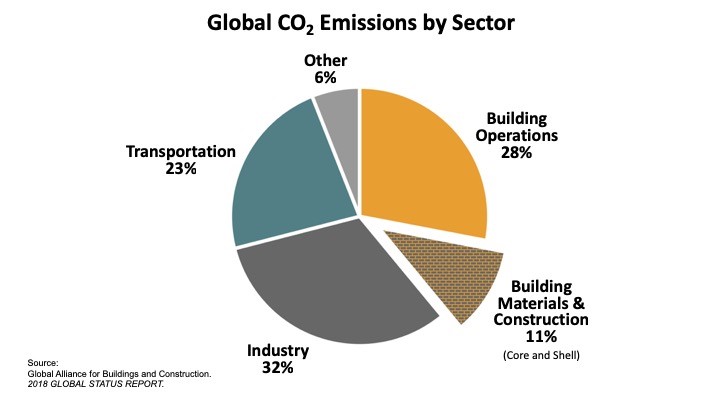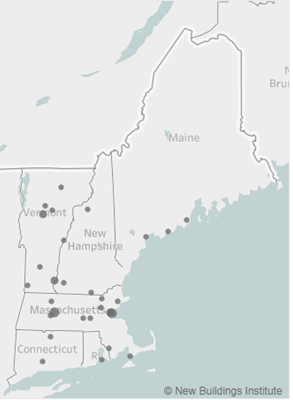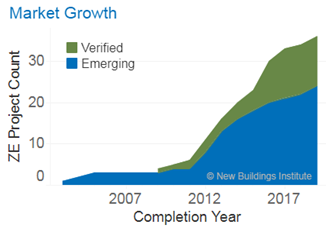I was recently asked to help a friend advocate to his town in support of Zero Energy Schools. A Zero Energy, or Net Zero, building produces as much energy through the use of onsite clean renewable energy as it uses over the course of the year.
The climate change movement is gaining more awareness on the general population, but the role of buildings may not be immediately apparent to those outside the industry. The truth is that buildings are the single largest contributor to climate change, generating nearly 40% of annual global greenhouse gas emissions. The good news is that Zero Energy is more attainable than ever before.

Within the architecture community, the American Institute of Architects has a strong position on the role of the industry to prevent climate change. The 2030 Challenge established in 2002 has set carbon reduction goals for the built environment with the goal of achieving carbon neutral design by 2030. These goals align with the IPCC (Intergovernmental Panel on Climate Change) carbon reduction targets of limiting warming below 1.5°C. To achieve these goals, we need to start designing buildings to Zero Energy now.
Zero Energy buildings are for the most part fully electric, so that all of their energy use can be offset with renewable energy generation, such as solar, geothermal, micro-hydro, and/or wind. There are over 600 Projects in the New Building Institute’s (NBI) Getting to Zero Buildings Database, which is more than a tenfold increase since NBI started tracking buildings in 2012. Of these, 108 are verified Zero Energy, 12 are in New England, 6 of which are educational projects. Not only is Zero Energy a proven success in New England, but schools are the most popular Zero Energy project type.
New England Zero Energy Commercial and Multi-Family Building Data
New Building Institute's Getting to Zero Database



Schools have always been a fertile testing ground for sustainability. Their educational mission lends itself to demonstration technologies. In addition, the benefits of sustainable design in schools are not only didactic, but also positively impact the health of wellbeing of the students. For example, increased daylight not only reduces the need for electric light but also has been shown to improve test scores. Natural ventilation and mechanical ventilation with energy recovery are energy efficient and increase cognitive ability. High levels of insulation reduce energy loads, increase thermal comfort, thereby reducing stress. Studies on childhood development demonstrate that access to a healthy natural environment supports physiological, psychological, and cognitive development.
Government agencies have an opportunity and responsibility to consider community health and sustainability when creating public infrastructure. Reduced use of fossil fuels lowers energy bills and improves air quality. Air pollution is directly related to increased asthma rates and can be attributed to 200,00 early deaths per year in the United States. The air particulates associated with combustion are particularly harmful as they are small enough to be absorbed through the lungs into the bloodstream where they cause respiratory and cardiovascular disease. New York City is implementing a historic building emissions law that sets limits on carbon emissions per square foot in 2024 and 2030 for buildings greater than 25,000 square feet (about 50,000 buildings). The reduction in building emissions in New York City is one of the most powerful tools to meet its goal to reduce overall carbon emission by 80% by 2050.
Every school project, both new construction or renovation, can evaluate how design decisions affect the current and future health of students, and the sustainability of the world the next generations will inherit. With this information, schools can incorporate Zero Energy goals and lead by example to mitigate the climate change crisis.
Here are some additional resources for how to design schools for health and zero energy:
Net Zero Energy Schools Roadmap




